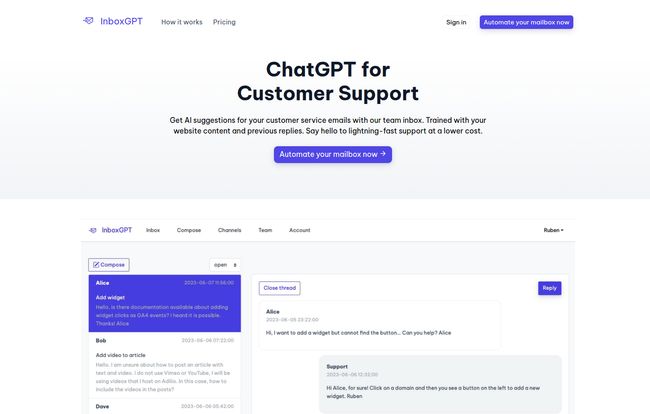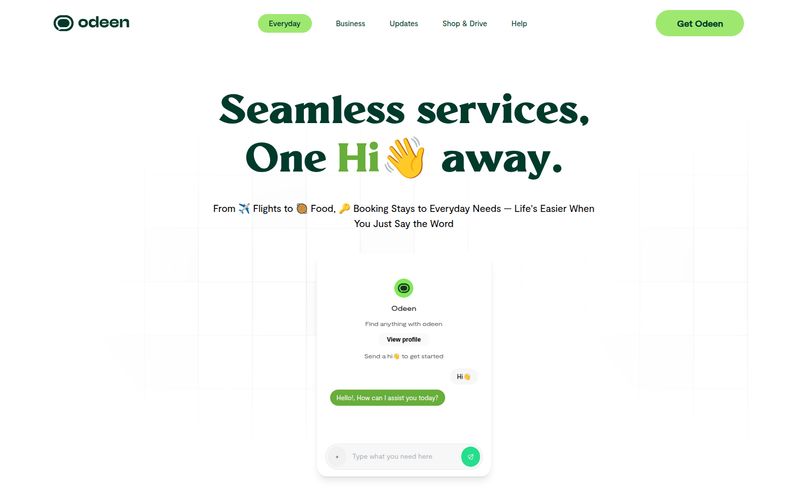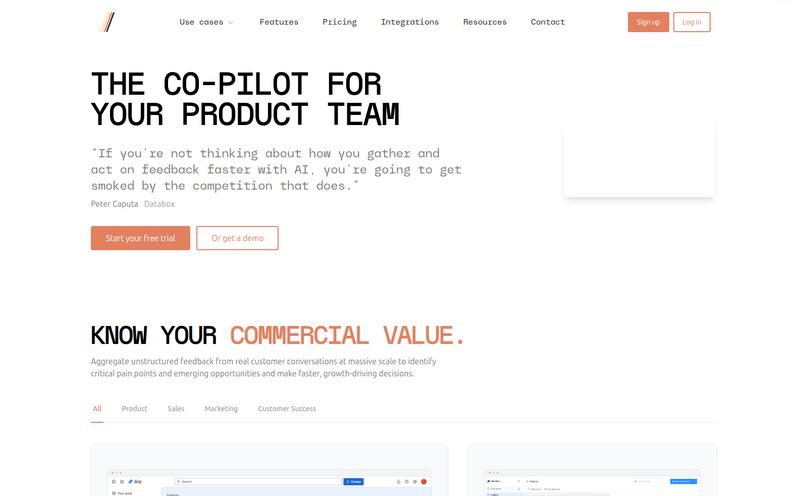The shared customer support inbox is often the most dreaded place in any company. It’s a digital hydra—answer one email, and two more seem to pop up in its place. It’s a constant battle to maintain a consistent tone, get the right information, and just… keep up. I’ve been in the trenches of traffic generation and business growth for years, and I can tell you that poor customer support is one of the fastest ways to kill your brand reputation.
We’ve all seen the explosion of AI tools promising to solve all our problems. Most are just shiny objects. But every now and then, something comes along that’s genuinely practical. When I heard about InboxGPT, which frames itself as "ChatGPT for customer support," my curiosity was piqued. An AI that lives in your inbox, learns from your past conversations, and helps your team respond faster? Okay, you have my attention. But is it just another gimmick, or is it the real deal? I had to find out.
So, What Exactly is InboxGPT?
Think of it this way: InboxGPT isn't just a fancy auto-reply generator. It’s more like hiring a super-smart assistant for your entire support team. This assistant has already read every single page of your website, all your help docs, and every customer email you've ever sent. Instead of you having to search for that one perfect response you wrote six months ago, InboxGPT suggests it for you, right inside your Gmail-based team inbox.
It's built on the back of ChatGPT's language capabilities but trained specifically on your business. This is the critical difference. It connects to your existing Gmail mailboxes, pulls them into a single unified inbox where your whole team can collaborate, and then uses its AI brain to help you write better, faster emails. The goal is simple: speed up support, make your answers more consistent, and ultimately, lower the cost and headache of managing customer communications.
The Core Features That Actually Matter
A tool is only as good as its features, but I’m not interested in a laundry list. I care about what actually moves the needle. Here’s what stood out to me about InboxGPT.
The Unified Inbox: Your Command Center
If your team is still forwarding emails back and forth or using clunky labels in a personal Gmail account to manage support@, info@, and sales@... please, for the love of all that is holy, stop. It's a recipe for disaster. Things get missed, two people reply to the same email, and the customer gets a confusing, disjointed experience.
InboxGPT solves this by creating a single, shared inbox. All designated mailboxes feed into one place. Your entire team can see who is working on what, assign conversations, and leave internal notes. It’s the kind of transparency and collaboration that's fundamental for any serious support operation. It’s not a revolutionary concept—tools like Front and Help Scout have done this for years—but integrating it directly with a purpose-built AI is where the magic starts to happen.
AI-Assisted Writing: More Than a Suggestion Box
This is the main event. When you open an email, InboxGPT's AI gets to work. It analyzes the customer's query and, based on its training, suggests a complete response. From what I’ve seen, these aren't just one-line, generic blurbs. They are often fully-formed, context-aware drafts that are ready to send with maybe a minor tweak or two.

Visit InboxGPT
The secret sauce is the Continuous Learning AI. It doesn't just get a one-time brain dump from your website. It learns from every new email your team sends. So when you manually edit an AI suggestion to be more friendly or add a new detail, the model learns from it. Over time, the suggestions get sharper, more accurate, and more aligned with your brand's voice. It’s like a new employee who gets smarter every single day without you having to constantly retrain them. This is a massive win for consistency, especially as your team grows.
Speaking Your Customer's Language
The platform also supports multiple languages. For any business with an international customer base, this is huge. You can provide AI-assisted support in Spanish, French, German, or whatever language your customers speak. This removes a significant barrier and shows a level of service that can set you apart from competitors. It’s a feature that might seem small but has a massive impact on customer experience.
My Experience: The Good, The Bad, and The AI
Alright, let's get down to it. I’m always skeptical. The marketing always looks good, but how does it feel to actually use it? The setup was surprisingly painless. Connecting our Gmail accounts was straightforward, and within a short time, emails started flowing into the unified inbox. The interface is clean and intuitive, which is a relief. No one has time for a steep learning curve.
The first time an email came in with a tricky question and the AI popped up a near-perfect answer… I gotta admit, it was a 'wow' moment. It saved me the 5-10 minutes I would have spent digging through old docs or sent folders. Multiply that by dozens or hundreds of emails a day, and you can see the ROI right there.
But it's not perfect. And any review that tells you a tool is flawless is lying. The AI is only as good as the data it's trained on. If your past emails are a mess, or your website documentation is sparse, the initial suggestions might be a bit wobbly. You have to be prepared to do some initial hand-holding and editing to guide the AI. It's an investment of time upfront to get a massive payoff later. Also, for highly nuanced or emotionally charged situations, you'll always want a human to take the wheel. The AI is an assistant, not a replacement for human empathy.
Who Should Be Using InboxGPT?
So, who is this for? In my opinion, InboxGPT hits a sweet spot for a few key groups:
- Startups and Small Businesses: Teams that are growing fast and feeling the pain of email overload. You need to scale your support without immediately tripling your headcount. This tool lets you punch above your weight.
- Established Companies Using Gmail: If your whole operation is already built around Google's ecosystem, the integration is seamless. It’s a much lower barrier to entry than migrating to a completely new helpdesk platform.
- Teams Focused on Efficiency: If you measure things like 'time to first response' and 'resolution time', this tool is designed to move those numbers in the right direction.
Who is it not for? If you're a solopreneur with only a handful of support emails a week, it might be overkill. Similarly, if your company already has a massive, deeply entrenched system like Zendesk with custom integrations galore, switching might not be practical. But for the huge segment of businesses in the middle, it's a very compelling proposition.
Let's Talk Money: The Pricing Breakdown
Pricing is always the million-dollar question, or in this case, the $29 question. Here’s how it shakes out.
The main offering is the Growth Plan at $29 per user, per month. This gets you the unified AI-powered mailboxes, unlimited messages, and all the team collaboration features. Now, is it worth it? Let's do some quick back-of-the-napkin math. If this tool saves each support agent just one hour of work per week—which feels like a very conservative estimate—you're already coming out way ahead. Compared to the cost of a bad customer review or the salary of another full-time agent, $29/mo seems like a pretty solid investment to me.
For larger organizations, there's an Enterprise Plan. This is a custom-priced tier that adds features big companies need, like SAML Single Sign-On for security, dedicated support, and custom contracts. This is standard practice, and if you're at that scale, you'll need to contact their sales team directly.
The Final Verdict on InboxGPT
After spending some time with it, I can say that InboxGPT is more than just another AI tool. It’s a thoughtfully designed platform that addresses a very real, very painful problem for a lot of businesses. It's not about replacing humans; it's about augmenting them. It takes the repetitive, soul-crushing parts of customer support off their plate, freeing them up to focus on the complex issues where a human touch is really needed.
Is it a silver bullet that will magically solve all your problems? No. You still need a good support strategy and a commitment to quality. But it is an incredibly powerful lever. If your team is drowning in emails and struggling for consistency, InboxGPT is one of the most practical and impactful tools I’ve seen in a while. It’s definitely worth a look.
Frequently Asked Questions
Is my company's data safe with InboxGPT?
Security is obviously a huge concern when dealing with customer data. InboxGPT emphasizes its security protocols, and given its integration with Gmail, it operates within a generally secure ecosystem. For specific compliance needs (like HIPAA or GDPR), it's always best to have a direct conversation with their team.
Do I need to be an AI expert to train the models?
Not at all. The beauty of the system is in its continuous learning. You 'train' it simply by using it—writing and editing emails as you normally would. The AI learns passively in the background. There's no complex coding or data science degree required.
Is there a free plan or a trial available?
The pricing page doesn't explicitly list a free plan or a free trial period. Many SaaS companies in this space offer demos or may provide trial access upon request, so it would be worth reaching out to their super-friendly support team to see what's possible.
Does it really work well with languages other than English?
Yes, this is one of its listed strengths. Leveraging the power of models like ChatGPT, it has strong multilingual capabilities, making it a viable option for global teams or businesses serving a diverse, non-English-speaking customer base.
What if I need a custom feature that isn't supported?
For custom integrations or specific feature needs, the Enterprise plan is likely your best bet. The website encourages you to contact them for such requests, indicating a willingness to work with larger clients on bespoke solutions.
Can I use my own OpenAI models or API key?
The platform appears to be an all-in-one solution with its own fine-tuned models. The FAQ on their site addresses this, suggesting that if you want to use your own OpenAI models, you should get in touch to discuss potential options.



